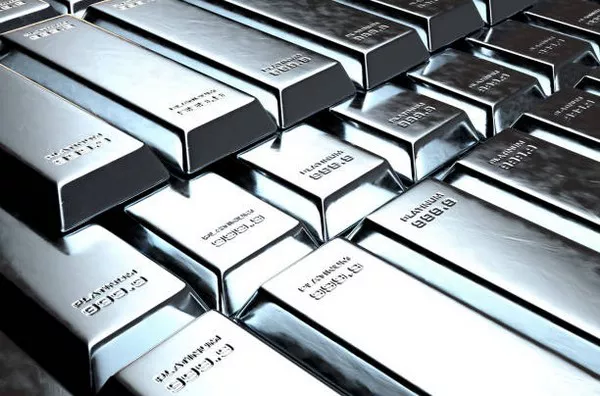Silver, often referred to as the “poor man’s gold,” has been a valued precious metal for millennia, serving various roles in currency, investment, and industry. As of today, understanding the cost of 1kg of silver involves navigating a complex interplay of market forces, geopolitical events, technological advancements, and economic indicators. This article delves into these factors to provide a comprehensive overview of what determines the price of 1kg of silver.
Historical Context and Silver’s Market Dynamics
Silver has a storied history as a medium of exchange and a store of value. Historically, its price has been influenced by its dual role as both a precious metal and an industrial commodity. The demand for silver in jewelry, coinage, and investment often moves inversely with economic confidence, with investors flocking to silver as a safe haven in times of economic uncertainty.
Market Supply and Demand
The cost of 1kg of silver is predominantly driven by the basic economic principle of supply and demand. Silver’s supply chain starts with mining, followed by refining and distribution. Major silver-producing countries include Mexico, Peru, China, and Russia. The availability of silver from these countries significantly impacts global supply. On the demand side, silver’s applications in electronics, photovoltaics (solar panels), medical instruments, and traditional industries like jewelry and silverware play critical roles.
1. Mining and Production Costs:
The cost of silver mining includes exploration, extraction, and refining processes. Fluctuations in energy prices, labor costs, and regulatory changes in mining regions can affect production costs and, consequently, the price of silver.
2. Industrial Demand:
Silver’s excellent electrical conductivity makes it indispensable in electronic devices. The growing adoption of solar energy has also increased demand for silver, as it is a key component in photovoltaic cells. Industrial demand tends to be relatively inelastic, meaning that price changes have a limited effect on the quantity demanded.
3. Investment Demand:
Silver is considered a hedge against inflation and currency devaluation. During economic downturns or periods of high inflation, investment demand for silver often rises, pushing prices higher. Exchange-traded funds (ETFs), bullion, and coin sales are major avenues for silver investment.
Geopolitical and Economic Factors
Global political stability, economic policies, and international trade relations are significant factors influencing the cost of silver.
1. Geopolitical Tensions:
Events such as trade wars, sanctions, or conflicts can disrupt mining operations and trade routes, affecting silver supply and prices. For instance, geopolitical tensions in major silver-producing regions can lead to supply constraints.
2. Monetary Policies:
Central banks’ monetary policies, including interest rates and quantitative easing, influence silver prices. Low interest rates decrease the opportunity cost of holding non-yielding assets like silver, making it more attractive to investors. Conversely, rising interest rates can put downward pressure on silver prices.
3. Currency Strength:
Silver is traded globally, and its price is often quoted in US dollars. A strong dollar makes silver more expensive for holders of other currencies, potentially reducing demand and lowering prices. Conversely, a weaker dollar can boost silver prices.
Technological Advances and Innovations
Technological innovations can significantly affect both the demand and supply of silver. Advancements in mining technology can lower production costs, while new applications for silver in technology can boost demand.
1. Green Technology:
The shift towards green technology, including renewable energy and electric vehicles, has increased the demand for silver. Innovations in battery technology and other green applications are likely to continue driving demand.
2. Medical Applications:
Silver’s antibacterial properties make it valuable in medical instruments and treatments. As medical technology advances, the demand for silver in healthcare could rise.
Speculation and Market Sentiment
The silver market, like other commodity markets, is also influenced by speculation and market sentiment. Traders and investors often react to news, reports, and forecasts, which can cause short-term price fluctuations.
1. Speculative Trading:
Futures markets and other speculative trading avenues can lead to price volatility. Large institutional investors and hedge funds might take significant positions in silver, causing price movements based on market sentiment rather than fundamental supply and demand.
2. Market Sentiment:
Public perception and sentiment about economic conditions, inflation, and financial stability can drive investment in silver. Bullish sentiment can push prices higher, while bearish sentiment can lead to sell-offs and lower prices.
Current Market Trends and Analysis
As of mid-2024, the silver market has experienced notable trends and shifts. The transition towards renewable energy and the increasing importance of electronic devices have sustained industrial demand. Meanwhile, economic uncertainties and inflation concerns have bolstered investment demand.
1. Price Trends:
Over the past decade, silver prices have shown significant volatility, influenced by factors such as economic cycles, geopolitical events, and shifts in industrial demand. Analysts closely watch these trends to forecast future prices.
2. Future Outlook:
The outlook for silver prices remains cautiously optimistic. Continued industrial demand, especially from green technologies, coupled with potential economic uncertainties, suggests that silver will remain a valuable commodity. However, market volatility is expected to persist.
See Also Is It Legal to Melt Down Silver Coins?
Conclusion
The cost of 1kg of silver is shaped by a myriad of factors ranging from supply and demand dynamics, geopolitical and economic influences, to technological innovations and market sentiment. As a dual-purpose metal serving both industrial and investment needs, silver’s price is subject to complex interactions within the global economy.
Investors and industry participants must stay informed about these factors to navigate the silver market effectively. Understanding the underlying drivers can aid in making informed decisions, whether one is investing in silver as a hedge against economic uncertainty or leveraging its industrial applications. As global trends evolve, the silver market will undoubtedly continue to reflect the multifaceted nature of this precious metal.


